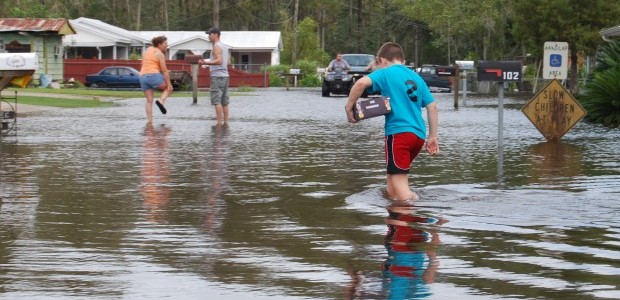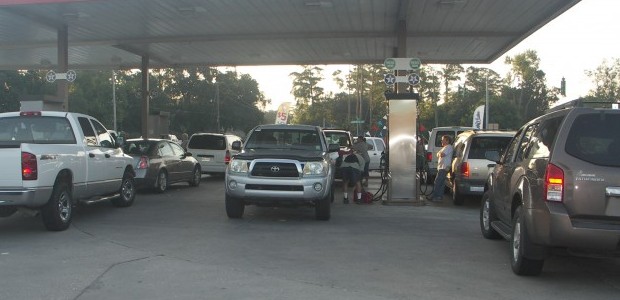
The latest updates for Hurricane Isaac; Kraemer fights rising flood waters
August 26, 2012
Corps say they will miss Morganza deadline
August 30, 2012Isaac has made landfall. Regional emergency management personnel are organizing assessments. Residents that evacuated the Tri-parish region have begun mapping return plans, and those that waited-out this storm are seen surveying the results from multiple days of gusty winds and heavy rain. They are all experiencing the eerie calm of aftermath.
Beyond expected questions that arise each year during the peak weeks of hurricane season, mid-August to mid-September, and following three years of calm sea-storm conditions, in the back of some minds there is another wonderment. Could coastal residents be in line for multiple hits, as has been experienced within the past decade?
Category 3 Hurricane Katrina made its historic landfall on Aug. 29, 2005. With sustained winds of 175 mph, the storm was blamed for 1,833 fatalities and $108 billion in damage.
It was only 26 days later that Hurricane Rita, also Category 3, slapped an already wounded Louisiana with a second punch. That time 180 mph winds prompted 125 fatalities and caused an additional $12 billion of destruction.
It is often forgotten that prior to Katrina, Hurricane Cindy (Category 1) struck Louisiana on July 6.
Three seasons later, on Sept. 1, 2008, Hurricane Gustav (Category 2) made landfall on Terrebonne Parish with sustained winds of 155 mph. That storm was blamed for 195 fatalities and nearly $7 billion in damages.
Once again, a follow-up occurred. This time 12-days later, when Hurricane Ike (Category 2), which ultimately made landfall in Galveston, Texas, impacted the Tri-parish region with back-flooding and tropical storm strength winds. That storm caused more than $37 million in damages and claimed 195 lives.
On Monday morning, the National Weather Service predicted Isaac would become a Category 1 hurricane by Tuesday. Forecasters could only guess that landfall would occur someplace between Morgan City and Mobile, Ala., between Tuesday and today.
“We are expecting winds between 75 and 80 mph with gusts up to 100 mph,” National Weather Service spokesman Ken Graham said. “For [the Tri-parish area] this could mean isolated swells of 6 to 10 feet.”
Graham confirmed the words of Weather Channel forecasters who said the only certainty was that this storm would not be another Katrina.
As for if a one-two punch could be expected for Louisiana as happened in 2005 and 2008, Graham said it is very rare for that to occur and not expected following Isaac. “That does not mean it could not happen sometime in the future,” he said.
Back-to-back hurricane events have taken place previously in Louisiana, in addition to those of 2005 and 2008.
According to data provided by the National Oceanic and Atmospheric Association, hurricanes hitting Louisiana within approximately one month of one another date back to unnamed storms on Aug. 11 (Category 3), Sept. 15 (Category 2) and Oct. 2 (Category 2), 1860.
The occurrence was repeated with unnamed storms on Aug. 23 (Category 2) and Sept. 1 (Category 3), 1879; again on Sept. 7 (Category 2) and Oct. 2 (Category 4), 1893; and between Aug. 17 (Category 1) and Sept. 29 (Category 3), 1915.
Although Isaac was predicted to be significantly weaker than Katrina, the storm still required Louisiana, Mississippi and Alabama to execute emergency management plans. Those plans were established following the devastation caused by a double-shot from Katrina and Rita.
Residents evacuate from Tropical Storm Issac on Interstate 10 Monday morning. Forecast models had the storm making a Gulf Coast landfall at presstime.









